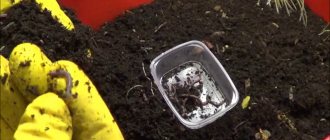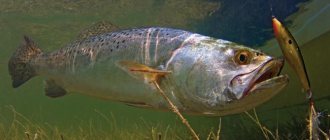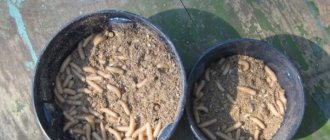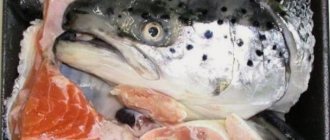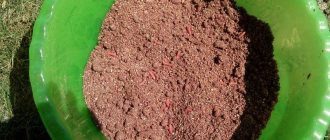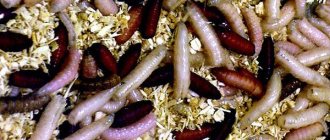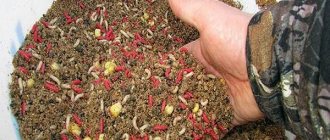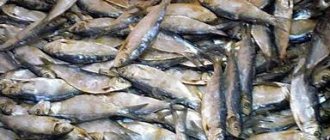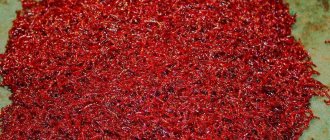Send
Now many people are interested in whether it is difficult to grow and breed Californian worms in ordinary home conditions.
No, it's not difficult! The red worm or Californian is as unpretentious in maintenance as an ordinary worm!
In order to start a business in breeding the Californian worm, you do not need any large financial investments. The worm business generally has many positive aspects, and probably the main one can be called the fact that almost anyone can start doing it, and also the fact that you don’t have to wait long for a return on investment and receiving your first profit.
Business plan for breeding Californian worms
So, if you are a person with little income, but have decided to organize your own business, then we advise you to consider breeding the California worm as an option. This business is quite simple, no special knowledge or skills are required, but there is a demand for worms and this niche in the market is not occupied. The technology for breeding these worms, which were bred in the USA, is quite simple. They are in demand among fishermen (fish bite very well on Californians), but large volumes of worms are in demand among those who raise poultry and fish. Worms are also used to produce high-quality fertilizers that are in demand by vegetable growers.
While noting the ease of opening this business, it is necessary to note the minimal labor costs and insufficient market saturation with products. Those. low competition.
Breeding the Californian worm, with a serious approach and the organization of good conditions for them, as well as with established sales in a short time, will first bring your business to full payback, and then will bring a good profit.
You shouldn’t start with large volumes and think about how to rent a large room. You need to start with an ordinary barn or basement, and later you can think about expanding your production capabilities. Organizing a verifarm will require investments, but in order for them not to be wasted, you must fully master and learn all the nuances of this business.
Answering the most common question: how to breed Californian worm? We will try to figure out what a novice entrepreneur needs to organize a profitable business.
Red Californian
Feeding California worms
When breeding beneficial invertebrates, you need to consider how to feed California worms at home.
Various organic wastes are used to feed beneficial invertebrates:
- vegetable and fruit peels;
- stale coffee or tea leaves;
- foliage and grass;
- tops of root crops and plant waste;
- spoiled cheese;
- moldy bread and bread crusts.
Throughout the day, the Californian worm eats food, the amount of which is 2 times its own weight. You can add their favorite food to the diet of invertebrates - rotten vegetables and plants, banana and potato peels, and the remains of various cereals.
California worms should not be fed large vegetable peelings, large pieces of tops or food waste. They simply will not be able to process them, so such food must first be crushed - finely chopped or minced. Leftover meat is also prohibited.
During the warmer months, California worms need to be fed every 10-14 days if raised in a large container and every 3-4 days if raised in a small box. During the winter months, the worms should be fed daily in small portions.
It must be taken into account that these invertebrates quickly get used to their diet, and it is extremely difficult to retrain them. If such a need arises, the diet is changed in stages. That is why the optimal option is to populate the nutrient substrate not only with adult individuals, but also with cocoons.
Breeding Californian worms is possible at home, both in an open garden plot and indoors. Breeding these beneficial invertebrates will not cause serious difficulties and will provide the opportunity to use high-quality, environmentally friendly vermicompost to fertilize garden plants.
Where is the best place to breed?
The big advantage of breeding worms is that there is no need for large areas. It’s very good if you have a summer house or a private house with a cellar; a basement in an ordinary multi-story building may also be suitable.
A worm farm can be organized not only indoors, but also simply in an open area, under a canopy.
If you have decided on the option of outdoor breeding, you must take into account that your business will be seasonal, since with the onset of cold weather the worms will first slow down their activity and then simply die. Therefore, it would be more preferable to keep worms in any room where it is possible to maintain above-zero temperatures throughout the year.
You can practice a combined option, i.e. This is when during the warm season the worms will be kept outside, and with the onset of cold weather they will be transferred to a warm room.
When setting up an outdoor worm farm, the first step is to fence off the area where the worms will be raised. Concreting the floors would also be a good idea. If this is not done, then their main natural enemies, i.e., will find out that there are worms in a given place. all kinds of pests or even moles may visit. You need to know that worms are the main food of moles in the natural environment.
California worm - does anyone breed it at home?
There are several options for breeding worms, as well as purposes. For the summer, a summer resident fences off a small area, for example 2 * 2 m, with boards and other materials suitable for these purposes. It is important that such a worm house requires an insulating “floor” and a canopy or shelter. The main conditions for vermicultivation in a summer cottage are stable watering of the substrate, keeping it moist and sheltering from direct rays of the sun. Isolation from the soil will protect the livestock from the risk of being eaten by natural enemies - mice, moles and birds. However, in late autumn, if you want to preserve the offspring of worms, it is advisable to make a shelter with straw up to a meter high. When purchasing livestock, and in any case you will need at least 400 grams, it is advisable to purchase the same substrate on which they lived before and gradually accustom them to the new one. It is recommended to add sand to the raw materials - it improves the digestion of these amazing animals and adds fluffiness to the finished product. If the worms burrow into the substrate, it means they like everything; if not, change the contents of the bed. For feeding, it is advisable to use mixtures of plant components: paper waste, cellulose, wood, plant leaves and stems, grass, food and textile waste, juice extracts, filtered grain sediments, brewing waste, potato peels, mushroom compost.
MOST SUITABLE MANURE: Horse manure. Solid fraction of cattle. Pigs. Sheep. Rabbits. Bird droppings. Composting of bedding-free cow manure can be done by mixing it with peat, pulp and paper production waste, moistened to 60% and neutralized with powdered CaCO 3. Any of the manure must be fermented and weathered, and lie in the open air for at least 2 months. The absence of a strong ammonia odor indicates that the raw material is ready for use.
Russified Californian at the dacha
What is the best way to grow
Next, you need to think about where your American wards will live. You can put together wooden boxes or plastic containers of various sizes, but it is advisable that their height be within forty centimeters. At first, many novice farmers use plastic barrels (preferably large in volume), cut them up and fill them with soil. We have already written in more detail about what containers can be used for breeding worms in the article: Domestic worms - maintenance, feeding, breeding and care
Breeding in boxes
Soil preparation
After preparing the worm houses, you need to fill them with suitable soil. There is nothing complicated here; they live in the same soil as ordinary ones. There is soil with worms on the bottom. If you are just going to buy worms, then you should take into account that in order to make it easier for them to adapt to new conditions, they need to be taken along with the soil in which they were grown. In this case, there is a guarantee that all individuals will survive.
Food is placed on top of the soil layer; humus, kitchen waste, rotted manure and leaves are suitable. If everything is done correctly, then your worms will quickly adapt and quickly begin to grow and produce offspring.
Be sure to pay attention to the fact that there are no metal compounds in the soil, because... this will negatively affect the health of the worms.
After moving in, make sure not only that the worms have food, but also that the temperature is maintained at an acceptable level for them and that there are no large changes.
Red Californian worms are valued due to their rapid growth and high rate of conversion of soil into humus.
Video “California worm breeding at home”
General information about earthworms and red worms
The earthy appearance is characterized by a body length from 2 cm to 20 cm. Depending on the type, the color can be gray, black, gray.
The common earthworm quickly adapts to any habitat. It is available, so it is used very popularly. But when breeding worms for fishing in boxes, they actively scatter. Their fertility and mobility are significantly lower compared to “thoroughbred” individuals.
Lifespan is 4-8 years. Individuals have a well-developed closed circulatory system; respiration occurs through skin cells covered with mucus.
Rain individuals are divided into 2 species, which differ in their lifestyle and biological characteristics. The first type includes those animals that find their food in the soil. They are called bedding, they are buried in the ground no more than 10 cm and do not go deeper when the soil freezes or dries out.
Others get food from the soil. The soil-litter variety sinks 20 cm into the ground. Burrowing individuals dive to a depth of less than 1 meter. They almost never crawl on the surface.
The red Californian worm is a type of earthworm that is grown at home. It has a dark red color with a purple tint, its body is elongated, slightly flattened in the abdominal area. The body is divided into segments, each of which has 2 bristles.
It has some advantages in care, feeding, breeding. The larva grows to 6-8 cm and reaches a weight of 1 g. It reproduces after reaching three months of age.
The Californian animal is very prolific. If you follow the maintenance rules, each resident will reproduce from 500 to 1500 larvae in 1 season. Its lifespan is 4 times longer than that of a natural earthworm. They live for about 16 years; from the 90th day, the larvae begin to copulate once every 7 days. But you need to create conditions favorable for this - build a bedding at a temperature normal for the variety.
The only negative is that it loves warmth and does not crawl into the soil when the temperature drops. The red bait belongs to hermaphrodites, self-fertilization is excluded.
When buying worms, you need to observe their activity and color so that it is reddish. Individuals easily switch to other types of food.
Where can I buy
When starting a business, you may encounter a problem - where to buy worms for breeding. It is better to buy from farmers with a good reputation, because... individuals purchased for breeding must be healthy. As a rule, to start breeding worms, they buy them from worm farms. When purchasing Californians, look for them to be bright red in color and active.
In practice, it has been determined that the initial population should be about 1.5 thousand individuals. To populate a cubic meter of soil you will need a maximum of three families. At wholesale, one worm costs about three rubles (due to inflation, the price may be different).
Private verifarm
Rules for keeping “Californians”
We start breeding Californian worms by purchasing them. You can buy them at worm farms. Healthy individuals are red in color and actively move. If you buy weak worms, you may not get either vermicompost or growth of individuals.
The price of one individual is approximately 1-3 rubles. For 1 kb.m. 1-3 families of soil are needed. If worms are needed for reproduction, then the “brood stock” is up to 1,500 healthy CFCs or more. The main points of technology on how to breed Californian worms at home:
- settling worms in a new habitat,
- formation of nutritious vermicompost by earthen individuals,
- reproduction process,
- collection of humus and multiplied worms for sale.
For active reproduction and for individuals to reproduce well, a temperature regime of +15 to +25C is needed. The soil should be neutral and the air humidity should be 75-80%.
The frequency of feeding is directly related to the number of individuals, the quality of the substrate and the season. On average, fresh components are added to the substrate once every 2 weeks. You cannot add a lot of food at one time, as this may cause fermentation or a change in the acidity of the soil mixture. In an acidic environment, worms die.
Food must be added as the previous portion is processed. Periodically, you need to add an earthen mixture, crushed eggshells (reduces acidity) and sand to the substrate, which improves the digestion processes of KKCH.
For information: When introducing a new diet into the diet of “Californians,” you need to be careful. With a rapid transition to a new food, mature individuals die, and young ones gradually get used to the new diet. It should be introduced gradually (about 10%), mixing with the food that is familiar to them.
California worms
How to breed Californian worms in the country
For them, a compost pit lined with polyethylene is created on the site, where the “underground inhabitants” are placed. Before frost, they need to be constantly fed, removing the top layer and adding a new one. Some part can be released into the soil to fertilize your site.
If there is no rain, moisten the holes by watering from a watering can. During the summer they reproduce well, but when the temperature drops they will hibernate. This is not scary, in the spring they become more active and will need increased nutrition. Therefore, you should take care of fresh substrate in the fall.
When growing “underground inhabitants”, do not forget about the following nuances:
- Cover the box with California worms with a lid, hay or burlap.
- The soil needs to be moistened and loosened twice a week: air and moisture must freely penetrate into the soil.
- If the temperature drops to -5C, then we additionally insulate the box with straw (layer up to 100cm).
- If the worms become lethargic, then replace the substrate with fresh one.
“Californians” do not like humidity fluctuations or decreases. There will be no problems when growing using plant residues: they contain a lot of moisture. With a different diet, regularly moisten the substrate; excess moisture will drain into the lower layer of sand. If the substrate is squeezed in a fist, moisture drains from it: this is the substrate that our “underground inhabitants” need.
For information: Excess water, passing through a layer of vermicompost, is enriched with nutrients.
This is a valuable product with macro- and microelements, humic acids, which is called vermicha. It is useful to use for watering flowers and seedlings.
Business stages
As you can see, the Californian red worm as a business is quite interesting, because... it is easy to breed. To summarize, we note the main stages of organizing a business:
- choosing a place or room;
- arrangement and preparation of the site;
- preparing containers for breeding;
- soil preparation and filling;
- acquisition of livestock;
- stocking of livestock;
- feeding;
- worm growth;
- reproduction.
After you go through all these stages, you are left with the most enjoyable part, namely harvesting, which will consist of collecting vermicompost, vermicelli and the worms themselves for sale.
Many fishermen know that the Californian worm is well suited for fishing and almost all the fish in our reservoirs bite on it.
When breeding, it is important to maintain a positive temperature in the range from 15 to 25C. Although this species can withstand a significant decrease in temperature, in this case their productivity is noticeably reduced.
Monitor the acidity of the soil, which should be at pH 7, humidity about 78 percent.
Let us note some points that must be taken into account:
- the boxes must be covered with something, the best option is a lid, but a cardboard sheet, hay or burlap will also work;
- the soil must be loosened at least once every three days to ensure access of oxygen to the lower layers of the soil;
- if there is a sharp drop in temperature, then you need to put more manure, straw may also be suitable (the height of the insulation is up to a meter);
- If you find that the worms are acting sluggish or have begun to hide from the light, this may mean that they need to be moved to new soil.
California worms - main features
Breeding red Californian worms has become widespread due to its ease of care, high life expectancy and rapid reproduction.
This type of invertebrate has several specific features :
- body length reaches 8-10 cm, diameter up to 5 mm;
- the body weight of adult worms reaches 4-7 g;
- color - from dark red to scarlet;
- the body is cylindrical, elongated, flattened on the abdominal side and consisting of more than 100 segments;
- the optimal temperature for keeping the worm is from +5 to +40°C;
- life expectancy is four times longer than that of ordinary earthworms and reaches 14-16 years;
- is distinguished by its extreme fertility and reproduction rate - up to 15-20 cocoons in one season;
- under favorable conditions, the colony can increase 400-500 times in a year.
California worms are very voracious - in a day they eat an amount of food that exceeds their own weight. Invertebrates pass food through the intestines, saturating it with useful substances - this is vermicompost.
The main difference between California earthworms and earthworms is that they produce high-quality and biologically active vermicompost in a short period of time.
Feed
Many new farmers may not know what to feed California worms. In this case, we hasten to calm them down, since they eat food that can be obtained for next to nothing or for very little money.
- Table scraps will do;
- tea leaves;
- wet paper;
- cow or pig manure (it is unacceptable to use fresh or old manure, preferably one that has lain for six months to two years). Rabbit or goat litter can be given straight away.
The soil with worms needs to be watered regularly using a watering can. Drying and excess moisture are unacceptable.
The frequency of feeding depends on the size of the livestock, the season and directly on the feed itself. Typically, the substrate needs to be updated once every one to two weeks.
Sales
Selling California worms in bulk is not only much easier, but can also bring a much more tangible profit to the farmer than selling them individually. Therefore, look for those buyers who are ready to constantly and in good quantities purchase your company’s products.
But you shouldn’t neglect the following category of potential buyers:
- summer residents and fishermen;
- farmers;
- zoological stores;
- shops for fishermen;
- farms specializing in fish breeding.
Since the price of the California worm is affordable for many, it is likely that regular wholesale supplies will be concluded, and this is exactly what you need to develop your business.
Advertise the products of your verifarm, and the exotic and loud name of this worm – Californian – can play an important role here. Many will be interested in purchasing it just because of this, and then the buyers themselves will call you, since the qualities of this worm are quite high.
Large veriferma
Types of worms
Let's look at what types of worms you need to buy for breeding and how they differ.
Regular rain
Earthworms are invertebrate animals whose body consists of ring-shaped segments with short bristles. The body is smooth, slippery, cylindrical, 15-30 cm long. The body of the worm moves based on the bristles. The ventral side is flat, the back is convex and dark in color.
The earthworm is a hermaphrodite but reproduces sexually through mating. The thickening on the front is called the girdle. There are glands that secrete a sticky liquid. The animal wraps its eggs in mucus during reproduction. A cocoon of mucus protects the eggs from dampness and adverse factors. After a while, small worms come out of it. The lifespan of an earthworm is 3-4 years.
The earthworm does not have sensory organs, but perceives irritations with the help of the nervous system and reacts to them reflexively. It also has no organs of vision, but it perceives light stimulation. Earthworms sense odors and are capable of regenerating lost body parts.
California red
One variety of earthworm is the California red worm, which is often bred at home. Compared to earthworms, Californian ones have many advantages in breeding, growing, and feeding. This animal reaches 6-8 cm in length and weighs 1 g. Reproduction occurs at three months of age.
With proper care, each individual produces up to 500-1500 pieces of its own kind per season. The Californian worm is distinguished by both high fertility and longevity. Its lifespan is about 16 years. The only drawback of the California worm is that it is very thermophilic and does not crawl deeper into the ground when the temperature drops.
Prospector
The prospector worm is the result of selective breeding. This species was obtained in 1982 as a result of crossing southern and northern dung worms. A distinctive characteristic of the animal is the presence of the instinct of self-preservation. At low temperatures it goes to a safe depth. This species reproduces in a much wider temperature range - +8...+29 °C.
The productivity of the prospector worm is higher than that of the ordinary earthworm. He is unpretentious, does not get sick and is distinguished by his perseverance in the substrate. Unlike the California red worm, the prospector worm easily switches from one type of food to another. The reproduction rate and life expectancy are the same as the Californian one, but this species retains high viability and productivity at a high density of the substrate.
Advertising methods
As you know, advertising is the engine of trade, and here you will need to take certain steps in order to sell already grown Californian worms.
First of all, you should look for those who place advertisements for the purchase of worms. It is quite possible that you will find a completely acceptable option for you in this way. But you shouldn’t stop there, you need to post advertisements - I will sell the Californian worm from America, wherever possible using:
- Internet;
- the press;
- Post advertisements wherever possible, on fences, walls, in the subway and even on trains.
Do not expect that buyers will immediately come running to you (although this is not excluded), advertise constantly and it is quite possible that in just a couple of months you will gather a sufficient and profitable clientele.
How to populate worms
We recommend reading our other articles
- Modern pumping station Pedrollo DG-PED 5 – advantages of use
- Where do succulents grow?
- How to get rid of midges in indoor flowers
- High-quality disinfectants wholesale
A minimum of 50 California worms are populated per square meter of substrate. You can populate already adult individuals, but usually cocoons are taken. Having matured, every week one California red worm lays up to 4 cocoons from which 2-20 young hatch. That is, 1,500 young worms are obtained from an individual per year.
You can populate the worm house in any warm period of the year. Initially, they usually plant a handful (up to 20 pieces) to check whether the soil is suitable for them or not. If after a couple of days 5 of them die, then the substrate is too acidic or, on the contrary, alkaline. After finding out the reasons, the acidity is adjusted and the worms are reintroduced.
Profitability
Having decided where to buy Californian worms for breeding and having arranged a place to keep them, you will soon begin to make your first profit.
- To purchase breeding stock you will need no more than $200.
- Next, there are small expenses for purchasing containers or the material from which you will make it.
- It is also worth considering the costs of heating and lighting the room in which your verifarm will be located.
- Feed costs are minimal, but they also need to be taken into account.
The benefits and harms of red Californian worms
Photos of Californian worms
The area of use of these worms seems narrow only at first glance. In fact, they are in demand not only in fishing. They process the organic remains of the earth, making real vermicompost, so useful in agriculture. In turn, vermicompost makes the land more fertile. It allows the soil to recover faster even without the use of fertilizers.
The positive qualities of these creatures include the fact that the substrate in which they live never emits unpleasant odors, despite the fact that it is made from compost and sometimes from manure! Unlike simple earthworms, these are more active and process food faster.
The main disadvantage of earthworms is that they can carry parasites. Many people feed them to poultry and pigs, but as a result, this can negatively affect their health. To prevent this from happening, it is worth breeding Californian worms exclusively for vermicompost, and not for feeding agricultural animals. Contact between animals and these worms is completely excluded, so the container where they are bred must be in a place inaccessible to them.
California worm cocoons
In addition, Californian breed worms are extremely heat-loving. At subzero temperatures, their activity decreases and their instinct of self-preservation weakens. They do not go deep into the earth, but simply huddle together and freeze. So insulating the worm house for the winter in this case is mandatory.
How to start
Start with small volumes and try to expand your business; your first buyers may be fishermen you know. Sell them at a price lower than in the store and they will be willing to take it from you. Subsequently, as volumes increase, look for wholesale buyers.
It is not easy to determine exactly what kind of income this business can generate because... much depends on the conditions you organize and the availability of feed. You must calculate this moment yourself. It is not difficult.
Good luck!
